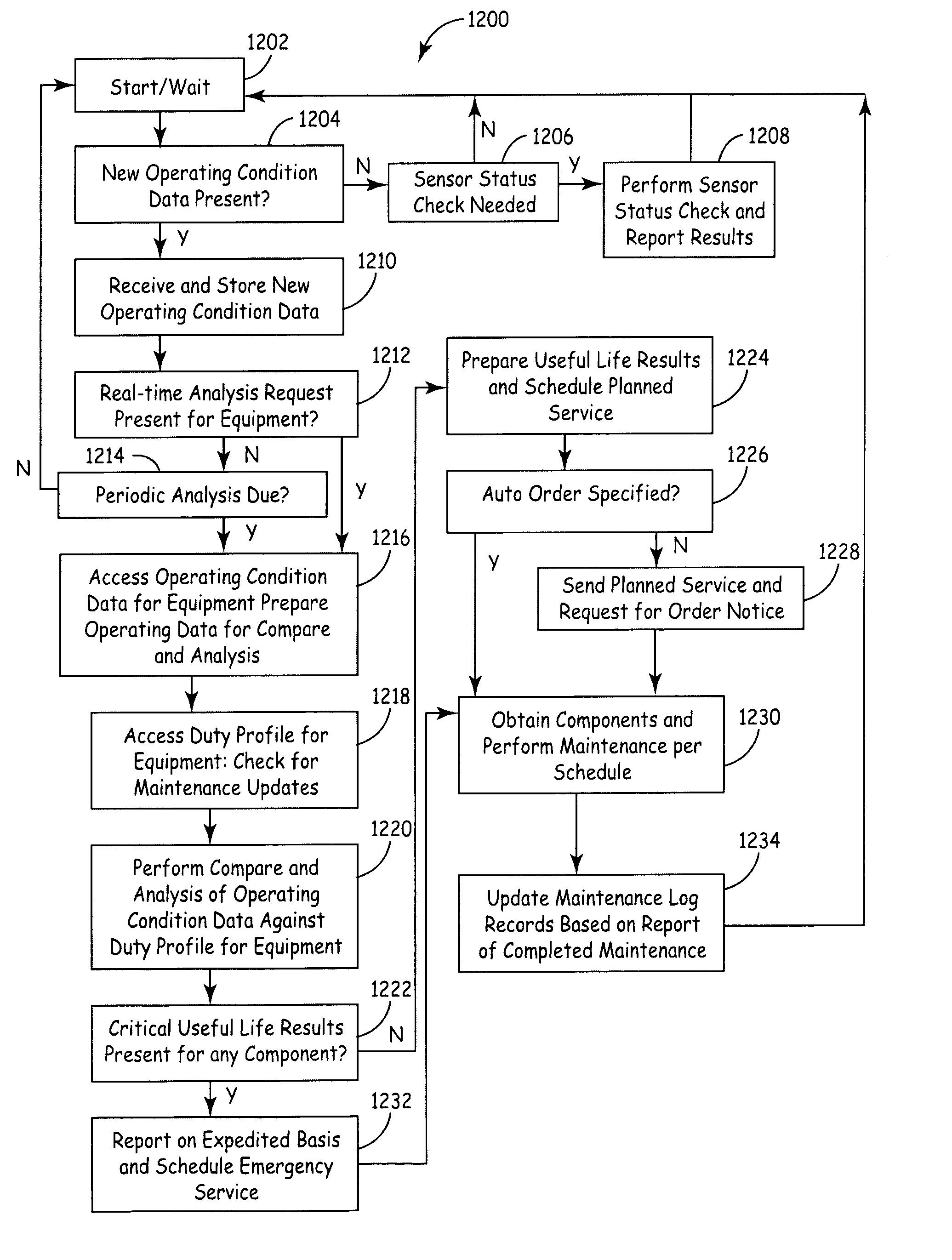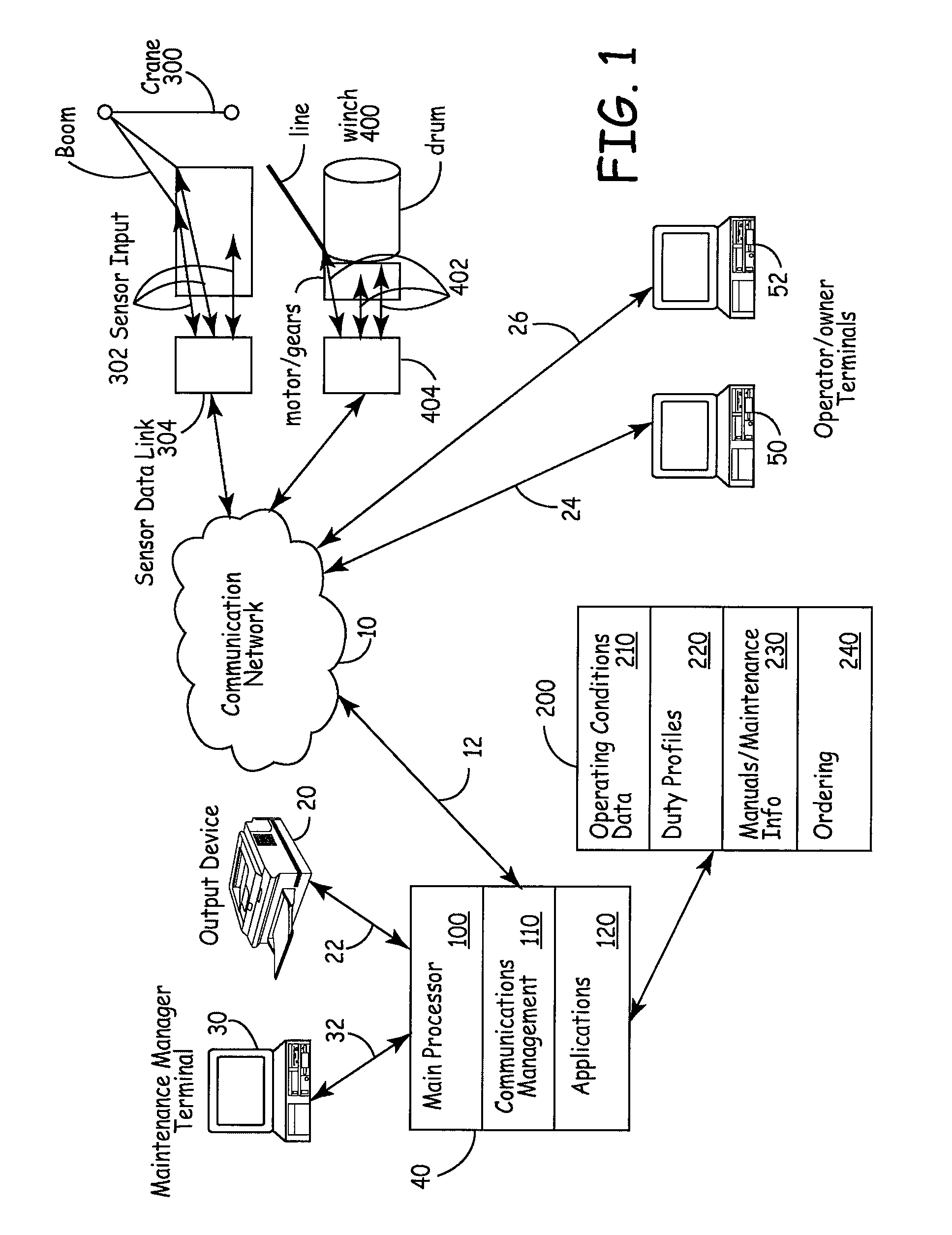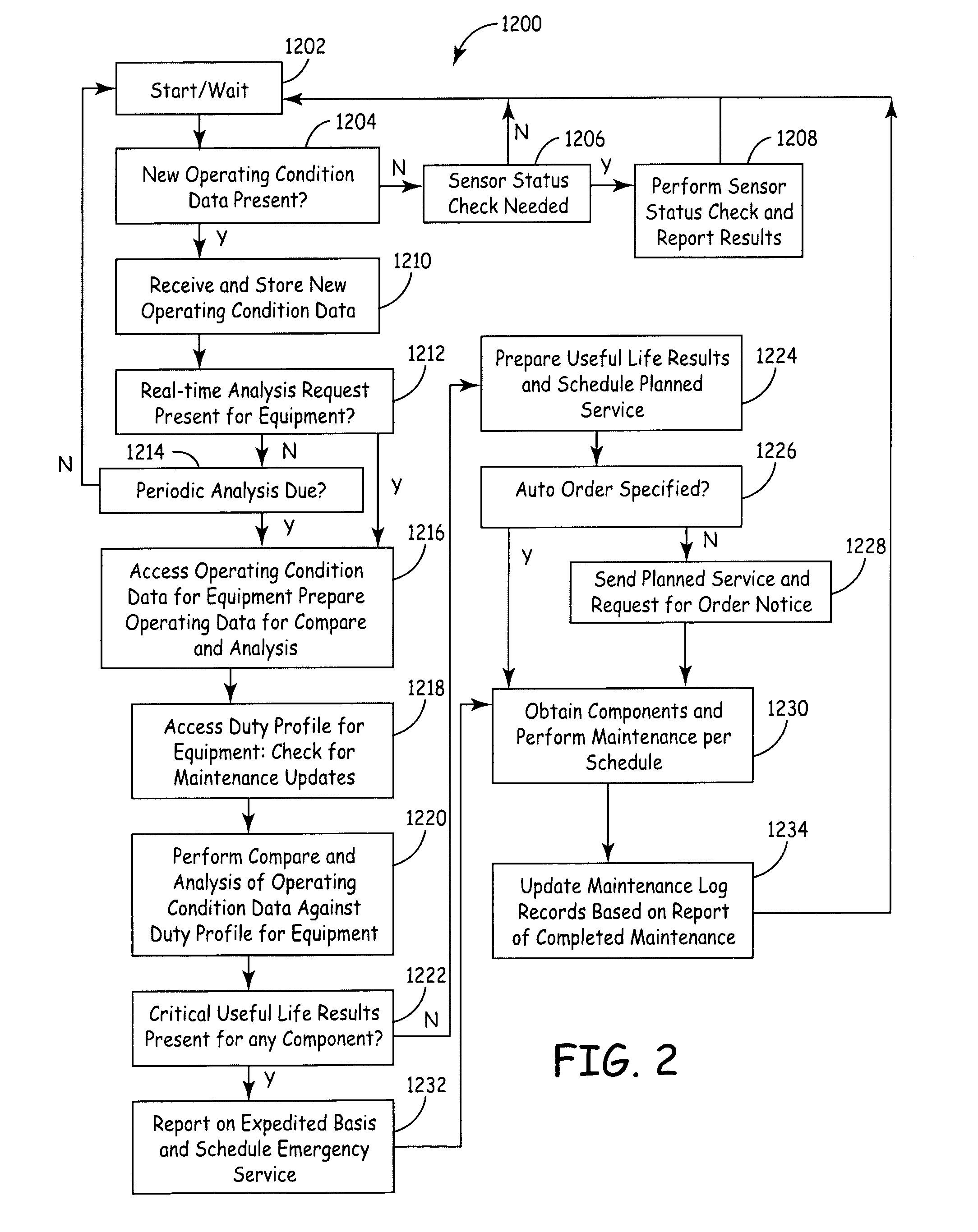Equipment component monitoring and replacement management system
a technology for monitoring and managing the life cycle of equipment, applied in the field of equipment components monitoring and replacement management systems, can solve the problems of equipment failure, potentially life-threatening situations, severe and expensive secondary damage, etc., and achieve the effects of less or no increase in the probability of failure, improved equipment condition interpretation, and reduced cost of production
- Summary
- Abstract
- Description
- Claims
- Application Information
AI Technical Summary
Benefits of technology
Problems solved by technology
Method used
Image
Examples
Embodiment Construction
A. Equipment Design and Component Useful Life
[0076]When sophisticated equipment is designed, it is frequently defined with a planned useful life for the overall item of equipment. In reality, the design must take into consideration the useful life of a variety of components. For components that are critical to useful life, there is usually useful life data available from a manufacturer or other source that has actual test data on useful life and / or theoretical projections that are derived from actual useful life data. Typically, the useful life is specified for one or more defined, assumed operating conditions. An operating condition may be specified in terms of a rate, such as speed or load, and a time duration for experiencing that speed or load and / or a distance for maintaining the rate of work, but may also include other operating conditions, such as environmental factors that may affect useful life, e.g., operating temperature, humidity, corrosives or particulates present. The ...
PUM
 Login to View More
Login to View More Abstract
Description
Claims
Application Information
 Login to View More
Login to View More - R&D
- Intellectual Property
- Life Sciences
- Materials
- Tech Scout
- Unparalleled Data Quality
- Higher Quality Content
- 60% Fewer Hallucinations
Browse by: Latest US Patents, China's latest patents, Technical Efficacy Thesaurus, Application Domain, Technology Topic, Popular Technical Reports.
© 2025 PatSnap. All rights reserved.Legal|Privacy policy|Modern Slavery Act Transparency Statement|Sitemap|About US| Contact US: help@patsnap.com



